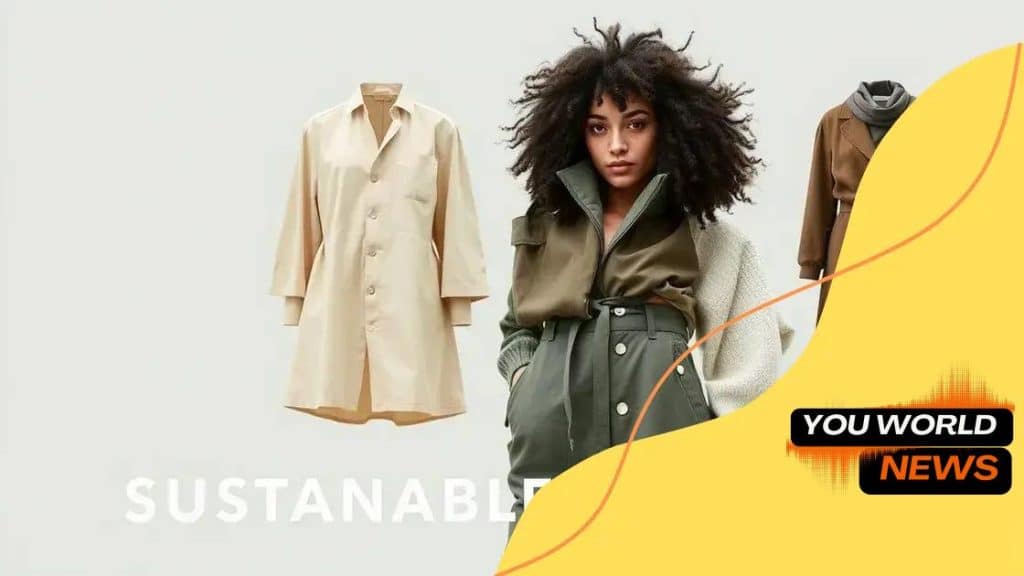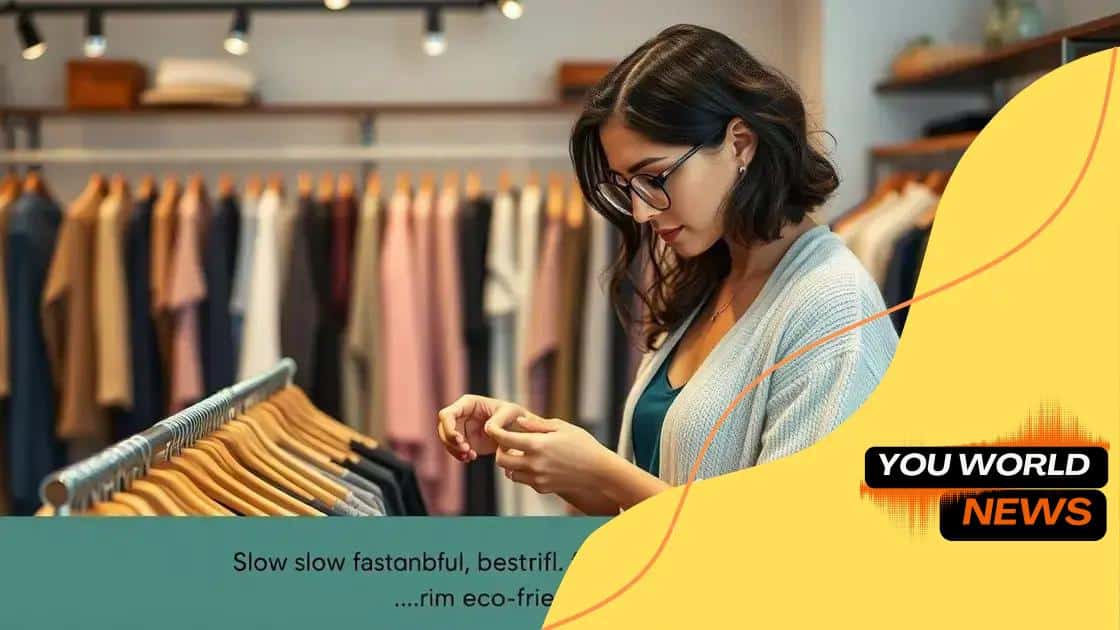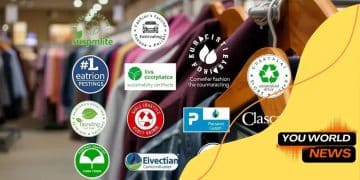The rise of slow fashion and ethical production

The rise of slow fashion emphasizes sustainability, ethical production, and consumer responsibility, encouraging informed choices that benefit the environment and promote fair labor practices in the fashion industry.
The rise of slow fashion and ethical production has sparked a shift in consumer behavior and industry practices. Have you ever stopped to consider how your clothing choices affect the world? This movement emphasizes quality over quantity, inviting us to think deeply about fashion.
Understanding slow fashion and its origins
Understanding slow fashion and its origins is essential to grasping its significance in the modern world. It emphasizes quality, sustainability, and ethical production over mass consumption. By prioritizing craftsmanship, slow fashion encourages consumers to think about the lifecycle of their clothing.
The Beginnings of Slow Fashion
The concept of slow fashion emerged in response to the fast fashion industry, which promotes rapid production and disposal of clothing. In the 1990s, pioneers began advocating for a more conscious approach to fashion. This movement highlighted the environmental and social consequences of our clothing choices.
Key Principles of Slow Fashion
- Sustainability: Prioritizing eco-friendly materials and practices.
- Quality: Encouraging the purchase of long-lasting, well-made garments.
- Ethics: Supporting fair labor practices and local production.
Slow fashion seeks to create a balanced relationship between consumers and the fashion industry. By slowing down, we can make more informed decisions about what we wear. This approach not only fosters creativity but also nurtures a deeper connection to our clothing.
As consumers, our choices can drive industry changes. Supporting slow fashion means valuing transparency and sustainability over convenience. This shift challenges us to rethink our shopping habits and to invest in pieces that tell a story. Promoting ethical production can positively impact the environment and society.
Why It Matters
Understanding the origins of slow fashion allows us to appreciate its importance in fostering a more sustainable future. It encourages us to ask questions about where our clothes come from and how they are made. When we embrace this philosophy, we contribute to a more responsible fashion industry.
The role of ethical production in the fashion industry
The role of ethical production in the fashion industry is vital for ensuring a sustainable future. It involves creating garments under fair working conditions, respecting both the environment and the workers who make our clothes. By prioritizing ethical practices, brands can build trust with consumers.
What is Ethical Production?
Ethical production encompasses various practices aimed at minimizing harm to people and the planet. This includes safe working conditions, fair wages, and environmentally friendly materials. The commitment to these principles is essential for brands aiming to make a positive impact.
Benefits of Ethical Production
- Fair Labor Practices: Ensures workers receive fair wages and work in safe environments.
- Environmental Responsibility: Uses sustainable materials and practices that reduce waste.
- Consumer Trust: Builds a loyal customer base that values transparency and ethics.
As consumers become more aware of the impact of their choices, ethical production gains importance. Shoppers increasingly seek brands that align with their values. They understand that every purchase supports a specific set of practices and beliefs.
Brands that adopt ethical production often share their stories openly, highlighting how their practices differ from traditional fast fashion. By showcasing their commitment to sustainability, these brands inspire others in the industry to follow suit. This shift promotes a culture of accountability.
Challenges in Ethical Production
While the benefits are clear, there are challenges to implementing ethical practices. Cost is often a significant barrier. Sustainable materials can be more expensive, leading brands to make tough choices about pricing. However, many consumers are willing to pay a premium for ethically produced goods.
Additionally, ensuring that every part of the supply chain adheres to ethical standards requires constant vigilance. Brands must monitor their suppliers and practices regularly. This level of commitment reflects a dedication to true ethical production and can distinguish a brand in a crowded market.
Benefits of choosing slow fashion

Choosing slow fashion comes with numerous benefits that positively impact both consumers and the environment. Unlike fast fashion, slow fashion focuses on quality and sustainability. This approach encourages us to think critically about our clothing choices and their consequences.
Quality Over Quantity
One of the primary benefits of slow fashion is the emphasis on quality. Slow fashion brands create garments that are made to last, reducing the need for frequent replacements. This longevity not only saves money in the long run but also minimizes waste in landfills.
Environmental Impact
When you opt for slow fashion, you contribute to a healthier planet. These brands prioritize sustainable materials and ethical production processes. By choosing eco-friendly fabrics, such as organic cotton and recycled materials, you help reduce the fashion industry’s carbon footprint. This conscious effort leads to less pollution and resource depletion.
- Less Waste: Fewer discarded clothes mean less landfill overflow.
- Sustainable Practices: Supports brands that use eco-friendly methods.
- Conservation of Resources: Reduces water and energy consumption in the production process.
Additionally, slow fashion supports fair labor practices. Many brands that embrace this philosophy ensure their workers receive fair wages and safe working conditions. This commitment not only helps uplift communities but also fosters a transparent supply chain.
Cultivating Personal Style
Another significant benefit is the opportunity to cultivate a personal style. With slow fashion, consumers are encouraged to invest in pieces that resonate with their individual tastes rather than following fleeting trends. This not only enhances personal expression but also fosters a meaningful relationship with clothing.
Choosing slow fashion often leads to a more mindful consumption experience. As consumers focus on fewer, high-quality items, they tend to appreciate their clothing more. This awareness creates a deeper connection to what we wear, making fashion a personal statement rather than a mere commodity.
How to identify slow fashion brands
Identifying slow fashion brands can be a rewarding journey for conscious consumers. These brands prioritize sustainability, quality, and ethical practices. By knowing what to look for, you can make informed choices that align with your values.
Look for Transparency
One of the key indicators of a slow fashion brand is transparency. Brands should openly share their production processes and sourcing practices. Check their websites for information about where their materials come from and who makes their clothes. This transparency builds trust and allows consumers to make ethical decisions.
Examine the Materials
Another important factor is the materials used in clothing. Slow fashion brands often use organic or recycled fabrics. Look for natural materials like cotton, linen, or wool. Avoid brands that rely heavily on synthetic textiles, as these can contribute to environmental harm. When a brand emphasizes the use of sustainable materials, it signals their commitment to slow fashion.
- Organic Materials: Certifications like GOTS indicate organic cotton.
- Recycled Fabrics: Fabrics made from recycled bottles or old garments.
- Natural Dyes: Use of non-toxic, eco-friendly dyes.
Additionally, consider the brand’s commitment to ethical labor practices. Brands that prioritize fair wages and safe working environments are often associated with slow fashion. Look for certifications like Fair Trade, which ensure advocacy for worker rights and sustainable development.
Check for Minimalism
Slow fashion also emphasizes a minimalist approach to design. Brands often create timeless pieces that resist fleeting trends. If you notice a brand focuses on classic styles rather than fast-changing collections, it’s likely embracing the values of slow fashion. This not only promotes longevity in your wardrobe but also reduces waste.
Social media can be a useful tool for identifying slow fashion brands. Follow accounts that promote sustainable fashion to find recommendations and brand spotlights. Many slow fashion brands actively engage with their communities online, providing insights into their practices and philosophies.
The future of slow fashion and consumer responsibility
The future of slow fashion is increasingly intertwined with consumer responsibility. As more people become aware of the impact of their buying choices, they are pushing brands towards sustainability and ethical practices. This shift is essential for a healthier planet and better labor conditions.
Empowering Consumers
Today’s consumers have access to more information than ever before. This knowledge empowers them to make informed choices about what they wear. By understanding the implications of fast fashion, consumers are choosing to support brands that align with their values. This movement places pressure on companies to adopt slow fashion principles.
Adoption of Sustainable Practices
In response to consumer demand, many brands are transitioning to sustainable practices. They are adopting eco-friendly materials, reducing waste, and ensuring fair labor practices. This change is not just a trend but a necessary evolution in the fashion industry. Brands that embrace sustainability often see increased loyalty from their customers.
- Transparency: Brands that share their production processes build trust with consumers.
- Innovation: Companies are developing new materials and technologies to minimize environmental impact.
- Collaborations: Partnerships with environmental organizations can enhance sustainability efforts.
As the market continues to shift, the importance of consumer responsibility cannot be overstated. When people choose to invest in sustainable options, they are voting for a system that values ethical production over speed. This change leads to a decline in overconsumption and promotes a more mindful approach to fashion.
Educating Future Generations
The future of slow fashion also hinges on education. Teaching younger generations about the importance of sustainability and ethical choices will pave the way for a more responsible consumer culture. Schools and communities can play a vital role in promoting awareness about the benefits of slow fashion.
In conclusion, the responsibility lies with consumers to shape the future of the fashion industry. By supporting slow fashion brands and demanding ethical practices, individuals can contribute to a positive change. This collective effort will ensure that the fashion industry moves toward a more sustainable and conscious future.
In conclusion, the future of slow fashion relies heavily on the responsibility of consumers. By choosing sustainable brands, we can not only support fair labor practices but also contribute to a healthier planet. As consumers grow more informed, they demand transparency and ethical practices from the fashion industry. This trend will shape how brands operate in the future. Education plays a key role in fostering a culture that prioritizes sustainability. Together, we can make a significant impact by supporting slow fashion and promoting conscious choices.
\n
\n
FAQ – Frequently Asked Questions about Slow Fashion
What is slow fashion?
Slow fashion is an approach to clothing that emphasizes quality, sustainability, and ethical production over fast, mass-produced garments.
How can I identify slow fashion brands?
Look for brands that prioritize transparency, use sustainable materials, and actively support fair labor practices.
What are the benefits of choosing slow fashion?
Choosing slow fashion promotes environmental sustainability, supports ethical labor practices, and helps create a more personalized wardrobe.
How can consumers promote slow fashion?
Consumers can promote slow fashion by choosing to buy from ethical brands, educating others about sustainability, and advocating for responsible practices in the industry.





